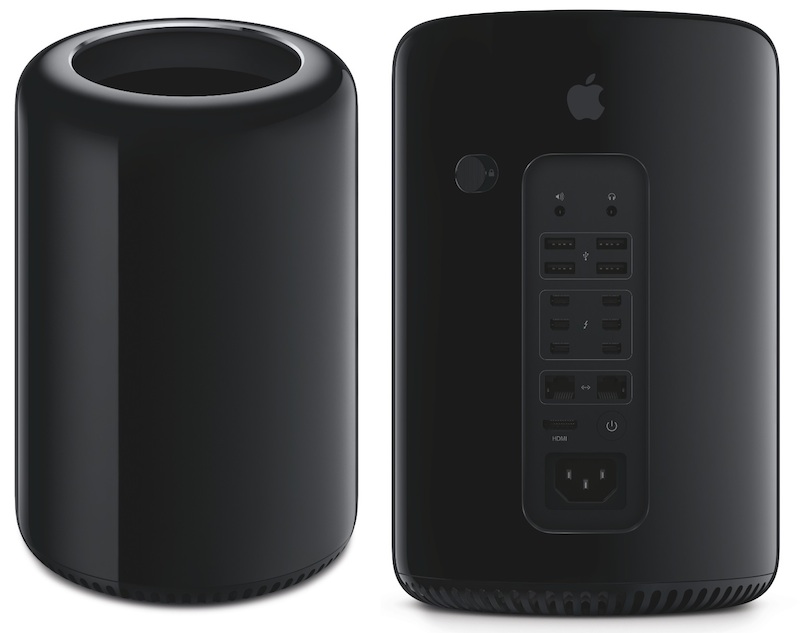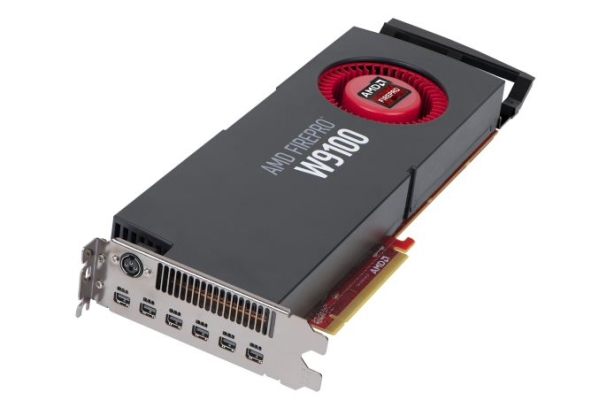It appears that AMD’s professional graphics push is finally starting to pay off.
AMD’s graphics business is chugging along nicely, thanks to the success of Hawaii-based high-end cards, solid sales of rebranded mainstream cards, plenty of positive Mantle buzz and of course the cryptocurrency mining craze, which is winding down.
However, AMD traditionally lags behind Nvidia in two particular market segments – mobile graphics and professional graphics. Nvidia still has a comfortable lead in both segments and its position in mobile is as strong as ever, as it scored the vast majority of Haswell design wins in 2013. However, AMD is fighting back in the professional market and it is slowly gaining ground.
Mac Pro buckets boost FirePro sales
Last year AMD told us at the sidelines of its Hawaii launch event that is has high hopes for its professional GPU line-up moving forward.
This was not exactly news. At the time it was clear that AMD GPUs would end up in Cupertino’s latest Mac Pro series. The question was how much AMD stands to gain, both in terms of market share and revenue.
Although we are not fans of Apple’s marketing hype and hysteria associated with its consumerish fanboys, we have to admit that we have a soft spot new Mac Pro buckets. The bucket form factor is truly innovative and as usual the Mac Pro has the brains to match its looks. Basically it’s Apple going back to its roots.

Late last year it was reported that AMD would boost its market share in the professional segment to 30 percent this year, up from about 20 percent last year. For years Nvidia outsold AMD by a ratio of four to one in the professional space. The green team still has a huge lead, but AMD appears to be closing the gap.
It is hard to overstate the effect of professional graphics on Nvidia’s bottom line. The highly successful Quadro series always was and still is Nvidia’s cash cow. AMD is fighting back with competitive pricing and good hardware. In addition, the first Hawaii-based professional cards are rolling out as we speak. AMD's new FirePro W9100, its first professional product based on Hawaii silicon, was announced a couple of weeks ago.
Can AMD keep it up?
2014 will be a good year for AMD’s professional graphics business, but it still remains to be seen whether the winning streak will continue. Apple does not care about loyalty, it’s not exactly a monogamous hardware partner. Apple has a habit of shifting between Nvidia and AMD graphics in the consumer space, so we would not rule out Nvidia in the long run. It might be back in future Mac Pro designs, but AMD has a few things working in its favour.
One of them is Adobe’s love of Open CL, which makes AMD’s professional offerings a bit more popular than Nvidia products in some circles. Adobe CC loves Open CL and AMD has been collaborating with Adobe for years to improve it. Support now extends to SpeedGrade CC, After Effects CC, Premiere, Adobe Media Encoder CC and other Adobe products.
Pricing is another important factor, as AMD has a tradition of undercutting Nvidia in the professional segment. When you happen to control 20 percent of the market in a duopoly, competitive pricing is a must.

Also, changing vendors in the professional arena is a bit trickier than swapping out a consumer graphics card or mobile GPU in a Macbook. This is perhaps AMD’s biggest advantage at the moment. Maintaining such design wins is quite a bit easier than winning them. AMD learned this lesson the hard way. Nvidia did not have to, at least not yet.
According to Seeking Alpha, demand for Mac Pro buckets is “crazy-high” and delivery times range from five to six weeks. Seeking Alpha goes on to conclude that AMD could make about $800,000,000 off a two-year Mac Pro design win, provided Apple sells 500,000 units over the next two years. At the moment it appears that Apple should have no trouble shipping half a million units, and then some.
If AMD manages to hold onto the Mac Pro deal, it stands to make a pretty penny over the next couple of years. However, if it also manages to seize more design wins in Apple consumer products, namely iMacs and Macbooks, AMD could make a small fortune on Cupertino deals alone.
Bear in mind that AMD’s revenue last year was $5.3 billion, so $800 million over the course of two years is a huge deal – even without consumer products in iMacs and Macbooks.

